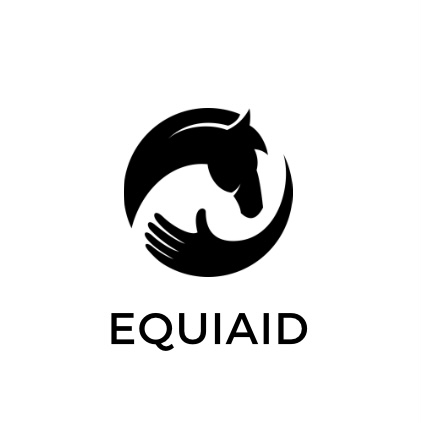Dealing With Mud and Flooding on Horse Properties: Tips and Strategies
As a horse owner, managing mud and flooding on your property can be a real headache. Not only can it make it difficult to care for your horses, but it can also pose a danger to their health and wellbeing. In this blog post, we will provide you with some tips and strategies for dealing with mud and flooding on horse properties.

Understanding the Problem
Before we dive into the solutions, it’s important to understand why mud and flooding occur on horse properties. There are several factors that can contribute to these problems, including:
👎Poor drainage
👎Heavy rainfall or snowmelt
👎High water table
👎Compact soil
👎Lack of vegetation
When any of these factors are present, it can create a muddy and flooded environment that can be difficult to manage. However, with the right strategies and tools, you can mitigate these issues and create a healthier and safer environment for your horses.
Solutions for Managing Mud and Flooding
🙌 Improve Drainage
The first step in managing mud and flooding is to improve drainage on your property. This may involve installing drainage systems such as French drains, culverts, or swales. These systems can help to divert excess water away from your horse’s living areas, reducing the amount of mud and standing water.
In addition to installing drainage systems, you may also need to regrade your property to ensure that it slopes away from your horse’s living areas. This can help to prevent water from pooling around your horse’s hooves and legs, which can lead to skin infections and other health problems.
🙌Add Vegetation
One of the main causes of mud and flooding on horse properties is a lack of vegetation. Without vegetation, the soil is more likely to become compacted, which can prevent water from penetrating the soil and increase runoff. To combat this problem, consider adding vegetation to your property.
Grass, for example, can help to absorb excess water and stabilize the soil. It can also provide a soft, comfortable surface for your horses to stand and move around on. Other plants such as shrubs and trees can also help to stabilize the soil and provide additional shade and shelter for your horses.
🙌Use Footing Materials
If you’re dealing with mud in your horse’s living areas, you may need to use footing materials to create a drier, more stable surface. There are many different types of footing materials to choose from, including:
- Gravel
- Sand
- Wood chips
- Rubber mats
- Geotextile fabrics
Each of these materials has its own pros and cons, so it’s important to research and choose the best option for your specific needs.
🙌Maintain Your Property
Regular maintenance is key to managing mud and flooding on your horse property. This may include tasks such as:
- Removing manure regularly
- Mowing grass to prevent it from becoming too tall and dense
- Trimming trees and shrubs to prevent them from blocking drainage systems
- Filling in low spots with soil or gravel
- Checking and cleaning drainage systems regularly
By taking these steps, you can prevent mud and flooding from becoming a major problem on your property.
Real-Life Examples
Here are a few examples of real-life scenarios where mud and flooding have been successfully managed:
The Stall Allen here Norway, is in a rainy area had issues with mud in her horse’s living areas. The owner she installed French drains to improve drainage and used a mix of sand and geotextile fabric as footing material. Regular maintenance, including removing manure and trimming trees, has helped to keep the area dry and stable.

The other client of ours, she lives in a flood-prone area had issues with standing water around her horse’s living areas. She regraded her property and installed a drainage system to move water away from the barn and paddocks. Additionally, she added gravel or rock to high-traffic areas to reduce the amount of mud. She also kept a supply of dry shavings on hand to help soak up any wet areas and added a sand footing to her arena to help with drainage.
A boarding facility had several areas prone to mud due to heavy horse traffic. To alleviate the issue, the barn owner installed French drains in the affected areas and added a layer of gravel on top to improve drainage. They also implemented a regular maintenance schedule for their paddocks, including manure removal and reseeding.

By taking proactive measures, these horse owners were able to manage mud and flooding on their properties and keep their horses safe and healthy.
In conclusion, mud and flooding can pose a serious threat to horses and their health, but there are steps that can be taken to manage the issue. Proper property maintenance, such as regular drainage and grading, can go a long way in preventing mud buildup. Using appropriate footing and adding gravel or rock to high-traffic areas can also help reduce mud. By taking the time to address these issues, horse owners can create a safer and healthier environment for their equine companions.
Research papers:
📝 “Effects of Mud on Hoof Kinematics in Horses” by L. R. Rasch and C. T. Whitcomb: https://www.ncbi.nlm.nih.gov/pmc/articles/PMC4149795/
📝 “Effects of Mud on Gait Characteristics of Mature Horses” by A. J. Plunkett et al.: https://journals.plos.org/plosone/article?id=10.1371/journal.pone.0164298
📝 “The Effect of Mud on Fly Populations and the Prevalence of Equine Infectious Anemia” by K. M. Pohlson and J. M. Eades: https://www.sciencedirect.com/science/article/abs/pii/S0737080606002553
Books:
“Managing Your Equestrian Property” by Cherry Hill
“The Horse Owner’s Guide to Natural Hoof Care” by Jaime Jackson
“The Complete Guide to Building Affordable Earth-Sheltered Homes: Everything You Need to Know Explained Simply” by Robert McConkey

